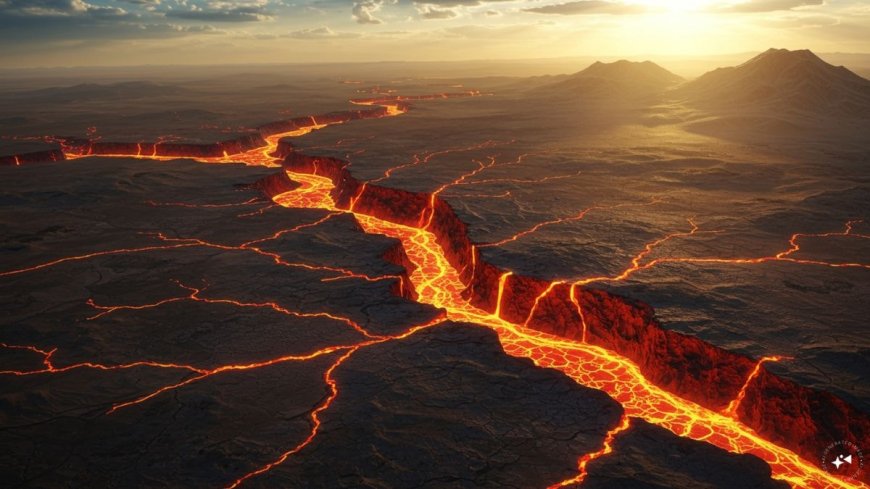Africa Slowly Splitting: Researchers Discover Earth's 'Heartbeat' Tearing Continent Apart
A group of researchers found a rhythmic pulse deep beneath Africa, similar to a human heartbeat, gradually pulling the continent apart. This underground activity could lead to the formation of a new ocean. The study examined the crust and mantle beneath Ethiopia's Afar region, shedding light on the continent's geological changes.

A group of researchers from across the world has found that a steady, rhythmic pulse deep beneath Ethiopia’s Afar region, much like a human heartbeat, is gradually tearing the continent apart. Their study of the crust and mantle beneath the region suggests that this underground activity could eventually lead to the formation of a new ocean.
The pulse is caused by molten magma pushing against the Earth’s crust from below. A strong, steady pulse has been found deep beneath Africa, moving like a heartbeat. This slow movement is gradually pulling the continent apart and could one day lead to the birth of a new ocean.
That is what a group of researchers from around the world have said after studying the crust and mantle beneath Ethiopia’s Afar region. In areas where tectonic plates pull away from each other, the land stretches and becomes thinner. Over millions of years, it can break apart and form a new ocean basin.
Researchers from the University of Southampton have found a steady, rhythmic pulse deep under Ethiopia’s Afar region, similar to a human heartbeat. This pulse is caused by molten magma pushing against the Earth’s crust from below. Over time, this is slowly splitting the continent, and could eventually lead to the formation of a new ocean.
To understand this process, the team collected over 130 samples of volcanic rock from the Afar region and the Main Ethiopian Rift. They also used existing data and advanced statistical models to study the crust and mantle beneath the surface.
The study showed that the mantle plume under Afar contains chemical bands that repeat across the rift system, like a geological barcode. The spacing of these bands changes depending on the conditions in each section of the rift.
The research was a joint effort by experts from 10 institutions, including the University of Southampton, Swansea University, Lancaster University, the Universities of Florence and Pisa, GEOMAR in Germany, the Dublin Institute for Advanced Studies, Addis Ababa University, and the GFZ German Research Centre for Geosciences.
The findings show that the plume under Afar is not fixed but reacts to the movement of the tectonic plates above. The study, published in Nature Geoscience on June 25, explains how these plates affect the upward flow of hot mantle material. As the continent continues to split, a new ocean basin is taking shape, with seafloor spreading expected to continue along the entire rift over millions of years.
In January, Ken Macdonald, a professor at the University of California, said that the continent appeared to be breaking apart more quickly than previously thought. According to him, Somalia, along with parts of Ethiopia, Kenya, and Tanzania, could eventually separate from the rest of Africa, forming a new landmass with its own coastline.
Although cracks are already visible along the rift, scientists believe it will still take several million years before the continent completely splits apart.
According to the source: Firstpost.
What's Your Reaction?
 Like
0
Like
0
 Dislike
0
Dislike
0
 Love
0
Love
0
 Funny
0
Funny
0
 Angry
0
Angry
0
 Sad
0
Sad
0
 Wow
0
Wow
0























































































































































